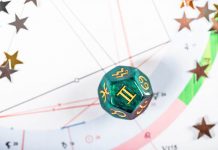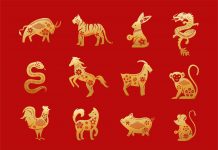Are there any comics to read at least once in a lifetime? Each of us has surely read at least one comic as a child or adult. Whether it represents the most classic of European stories or the most modern, twisted and futuristic of Japanese manga, comics can be considered a safe haven for those in need of a refuge from the monotonous everyday life.
In fact, comics – in addition to being just a simple element of entertainment – can guarantee both a temporary distance from reality and allow us to rely on the imagination to design life as we would like it, without any limit if not our own will is an element of in-depth study and study of events, facts and cultures. For this reason, comics can be considered, to all intents and purposes, as well as a means of simple entertainment also a useful means of strengthening our education and our culture, as well as allowing us to have timeless entertainment.
Since it is an artistic form, even comics therefore have its own history, its heroes, its genres and its masterpieces. By many it is understood as a purely childish or adolescent art, but in reality whether it is comics (in the United States), manga (in Japan), banda dessinéé (in France / Belgium), Italian comics or any other part of the world, the comic is ageless and sees among its admirers a very large slice of authors, enthusiasts, collectors and related publishers.
Table of Contents
Who invented comics?

In the 19th century, it was Rodolphe Töpffer, a Swiss, who was the first to associate texts with images. But it was in the United States that the first boxes with text bubbles were published in newspapers. In France, at the beginning of the 20th century, the heroes of comics were called Bécassine or Les Pieds Nickelés. Their boards appear in children’s newspapers, a new trendy press!
But, comics, is it only for children?
No! In the 1930s, comics exploded all over the world and also developed for adults. The comic book, the United States, telling the adventures of superheroes. In Belgium, at the same time, Tintin was a huge success. Hergé, its designer, invents a new style, “the clear line”, which underlines the outline of each element with an ink line. In the 1960s, manga, comics from Japan that can be read from right to left, imposed themselves around the world.
A big festival in France
In France, in 1974, it was the consecration: the comic strip, now called the 9th art, created its festival in Angoulême, the most important in Europe! Each year, prizes are awarded. In 2016, this festival was heavily criticized because, out of 30 authors selected for the grand prize, there were no women! Minority in the early days of comics, they are now more and more numerous to impose with talent their often humorous style.
The best comic books

Drawing up a selection like the one we propose is certainly a courageous and, in some ways, crazy undertaking, but our intention is to try to propose some cornerstones of this art chosen from the most diverse genres and dedicated to the most disparate themes. Before starting it is right to inform that the order is purely chronological and it is not a ranking.
Blankets

An autobiographical novel written and drawn by Craig Thompson, it is a coming-of-age story detailing his life from his childhood to life as a young adult. Taking about three and a half years to finish, Coperte became a widely acclaimed hit. The graphic novel has won numerous awards. Many praised him for his incredibly strong storytelling and art style. It was also praised for the themes presented where it was told exceptionally well.
The Adventures of Tintin

It is a comic book born from the brilliant mind of the Belgian Hergè whose first appearance dates back to 1929, but went on until 1983. The story sees as its protagonist Tintin, a young reporter always around the world, accompanied by inseparable dog Milù and ready to face any kind of danger, usually represented by spies, counterfeiters, drug traffickers. All the stories of the series are set and contextualized with the historical reality of the twentieth century since the first episode which sees a very particular setting: the Bolshevik Russia of 1929 and the Weimar republic.
Tex

Tex is the most famous and long-lasting Italian comic series ever, as well as the main newspaper of the Milanese publishing house Sergio Bonelli Editore. It is a western comic series focused on the history and life of the homonymous character created in 1948 by Giovanni Luigi Bonelli and Aurelio Galleppini. The road to success actually started uphill as the creators didn’t have many expectations of public appreciation. The story, after all, told the classic western events such as the constant struggle between the Pards and the Navajos Indians very much in vogue, in those years, in Hollywood cinema.
Over time, however, it became an editorial phenomenon of great fame, so much so that it was published constantly even after a good seventy years. The Tex series has also been the subject of sociological investigations, graduation theses and countless celebratory initiatives such as exhibitions, critical volumes, essays and meetings. The main topics of discussion were the relationship between cowboys and Indians, the historical narrative and scenographic detail and the role of the woman within the Texian society.
Asterix

Before the arrival of Mickey Mouse and his companions, the first comic to have that particular narrative style was Asterix, a French comic series centered on the character of the same name and created by René Goscinny (texts) and Albert Uderzo (drawings). The inimitable adventurous and humorous series first appeared in Pilote magazine in 1959 and was subsequently published in thirty-seven volumes translated in over a hundred countries.
The story tells of a tenacious Gallic village that does not accept the Roman invasion and does everything to defend itself from it, but the publication in 1959 a few months after the election of Charles de Gaulle as President of the French Republic can only remember the invasion of France by the Nazis.
Akira

We are in the early 80s, or in the years of the search for the future, of the desire to go beyond all knowledge available at the time. These are the years of experimentation both in the scientific and artistic fields. Musically one could hear a massive use of synthesizers and electronic instruments, while cinematically and artistically the audience was introduced into fantastic worlds or dystopian futures: in short, they were the years of cyberpunk.
Cinematographically, therefore, the first thing that comes to mind is undoubtedly Blade Runner, cartoonistically we cannot fail to mention Akira, the monumental manga by Katsuhiro Otomo which then inspired one of the most beautiful anime ever. The story is set in 2019, immediately after the third world war, in the city of Neo Tokyo. The latter lives in the nightmare of limitless depravity that sees the presence of criminal gangs, corrupt politicians and experiments on humans subsidized by public money. The protagonist of the story is Kaneda, a hard-to-see but sweet-hearted man, and his friend Tetsuo who will become, over the course of the story, a superman who is no longer able to control his new powers.
V for Vendetta

It is a comic of great importance both for the filmmakers involved in its realization: that is David Lloyd (drawings) and the teacher Alan Moore (texts), and for the social value. V for Vendetta is set in an alternate future in a dystopian and dictatorial London. V, the protagonist, is an anarchist famous for wearing the Guy Fawkes mask and for inciting the population to revolution. V, thanks also to the help of a girl of the people named Evey, desperately tries to bring down the power.
It is considered by many to be the comic equivalent of Orwell’s 1984 and the success of this work is undeniable, which was further enhanced thanks to the 2005 film of the same name directed by James McTeigue. Furthermore, the comic book came out in a period of full Cold War and during the first reprisals in view of the future fall of the Berlin Wall and therefore the political reference of the fight against oppression is clear. For this reason it has been used as an example in numerous cinematographic and literary works, as well as by organizations such as Anonymous.
Watchman

In the history of world comics, the superhero context has always had a certain prevalence and we notice it more today, in the era of cinecomics. The first comics that had superheroes as protagonists were born in the 1930s, or in the years when people were looking for someone who could save the world from continuous wars. Over time, superhero-themed comics began to take on their own identity based on a very specific philosophy that followed predefined and canonical canvasses.
Here, then, that the superhero becomes the stereotype of the invincible and just good who fights an incurable, but arrestable evil. In 1986, however, the master Alan Moore, in the company of the designer Dave Gibbons, decides to change the cards and presents Watchman. It is a miniseries published between 1986 and 1987 which, thanks to its majesty, in a short time became the most famous and important graphic novel ever, so much so that it earned a Hugo award and the inclusion in the Time list as one of the “100 best novels in English from 1923 to today”.
Maus

Maus, for completeness Maus: A Survivor’s Tale, is a graphic novel by Art Spiegelman, set during the Second World War and focusing on the Holocaust, based on the stories of the author’s father, a survivor of the Majdanek concentration camp and that of Auschwitz.
He received the Pulitzer Prize in 1992, and it was then that the world finally understood that comics weren’t just kids stuff, but could be an interesting and extraordinary way to tell terrifying stories like the Holocaust in new ways. The work is strongly autobiographical so much so that Spiegelman himself becomes one of the protagonists: his comic alter ego bears his own name, Art, and is a young author who decides to tell the story of his father Vladek, a Jewish veteran of the camps of concentration, to be able to pass it on to future generations, precisely the motivation that prompted Art to tell the story of his family.
The Crow

Considered by many to be the darkest comic of all time, it owes its origin to a story that really happened to the author James O’Barr. In fact, the year before writing the comic, the cartoonist lost his girlfriend in an accident. For this reason he began working on the work drawing the first inspiration from his own personal tragedy, and the second from the story of two boyfriends killed for a $ 20 ring in the city of Detroit, news that O’Barr had read in a newspaper in that period.
The protagonist of Il Corvo is, in fact, Eric Draven, a man beaten and killed together with his girlfriend by two very aggressive hitmen, who comes back to life to take revenge on them. Eric is, therefore, an anti-hero with gothic characteristics who goes around dressed up like Alice Cooper and with a head full of quotes from Cure, Joy Division, Edgar Allan Poe and more or less famous French cursed poets. A harsh and raw comic that does not renounce the melodious nuances of strong emotional impact that run through this masterpiece from the very first pages.
Sandman

The Sandman, more commonly known as Sandman, is a comic series written by Neil Gaiman and published by DC Comics in the United States between 1989 and 1996. It centered around a new version of a DC comic book character born in the United States. Golden Age.
In its 75 albums, Sandman tells the story of Morpheus, one of the 7 Eternals (Destiny, Death, Destruction, Desire, Despair and Delirium), kidnapped by a mysterious and enigmatic group. Each table brings together mythological, horror stories and many philosophical theories. For this reason, the series is recognized as having a high quality of texts and plots that bring it closer to literature with elements of philosophy, history and mythology and represents a rare case of mixing various narrative genres both in the literary field and above all in the field of comics. Even the covers see a mixture of styles ranging from photography, painting and digital art to collage. They were all made by a single designer, Dave McKean, who created original and decidedly unusual covers for a comic.
Lord Slug

Lord Slug is Piccolo Daimao who meets the first Namek arc and it’s all the worse for that. The Slug himself has even less personality than Demon King Piccolo, failing to enjoy himself at the same level of evil. The film itself also takes its cue from the Saiyan invasion which, after three films re-adapting concepts from the Saiyan arc, feels like a slap in the face.
The fact that Goku enters a false Super Saiyan state (prior to the reveal of the manga) also does the film a small favor. Despite being the fourth Dragon Ball Z film, Lord Slug unfolds as if Toei is completely out of ideas, regurgitating the series’ larger story arcs into a film that is as hasty as it is boring.
The best graphic novels
A graphic novel or “graphic novel” is a work halfway between the comic strip and the novel. It can have a very loose layout and be in black and white or color, have many more pages than a classic comic, alternate with pages of text and illustrations, etc. Regarding the content, there again there is no fixed rule: it can be as much about biographies as about plays, or about fictions.
Y: The Last Man

Y: The Last Man is a story that takes place during the apocalypse. Created by Brian K. Vaughan and Pia Guerra, the story focuses on two of the only males in the world. Yorick Brown and his little monkey Ampersand. With a total of around sixty numbers, the series has won three Eisner awards, highly regarded thanks to history. Since then, the series has seen a potential film adaptation never happened and a potential TV series.
Saga

Saga is a work also written by Brian K Vaughan but illustrated by Fiona Staples. Saga is an ongoing series that has strong ties to sci-fi influences such as Star Wars. A family of opposing races follows as they struggle to raise their daughter. All while being constantly pursued. Similar to his work on Y: The Last Man, Saga has won numerous awards, has been praised for its strong themes, general storytelling and wonderful art. He is currently on hiatus.
Batman: Return of the Dark Knight

One of the many creations of writer and artist Frank Miller, Batman: Return of the Dark Knight is a possible future in which the titular character has long since retired. However, due to various circumstances, he returned to the call, old but still vindictive of injustice. Frank Miller’s art and writing is highly praised, with many fans calling it one of the most definitive hooded crusader stories ever produced.
Due The Complete Persepolis

A critically acclaimed comic by Bande Dessinee, Persepolis is an autobiographical series detailing Marjane Satrapi’s early childhood that takes place during and after the Islamic Revolution. As a result, some of the content is controversial due to the graphic language and images. One of Persepolis ‘s biggest selling points was the use of visual literacy, which is essentially an incredibly powerful storytelling. Despite the controversy, Persepolis was a smash hit that ended up getting a film adaptation with numerous awards.
Cooler’s Revenge

Cooler’s Revenge takes the pinnacle of Freeza’s arc and brings him to Earth. In terms of the plot premise, Cooler’s Revenge is quite original in this respect, until you remember that Mecha Freeza does the exact same thing at the start of Cell’s arc. Both characters are even motivated by the revenge, Coola only on behalf of his brother. Goku’s transformation into Super Saiyan also takes its cue from Krillin’s death. If nothing else, Cooler is a character quite distinct from Freeza that arrogance is his downfall wrapping an otherwise uninspired film with a strong thematic bow.
Dead zone

Dead Zone may be the first Dragon Ball Z movie, but it’s easily one of the best. Excellent direction, combat choreography and DBZ art loan the first film of an epic quality that few other voices in the series can boast. At the heart of Dead Zone is an attempt to truly expand the mythology of the franchise through the story of Kami and the introduction of Garlic Junior. Dead Zone also repeats the encounter with Raditz to the letter: Gohan is kidnapped, Goku must ally with Piccolo and the villain is finally defeated due to Gohan’s anger.
Green algae

“Green Algae” is an investigation which tries to trace the origin of the ultra-toxic and deadly pollution which has infested the beaches of Brittany for half a century. For three years, Inès Léraud investigated the green algae scandal. After a documentary series on France Culture, she draws from it this striking comic that you will have a lot of trouble resting before you have finished it. The design is as minimal as the investigation is thorough. This investigation also gave rise to an Info Secrets of the investigation unit of Radio France.
Genres, styles of comic books
Generally, when you imagine a comic, you immediately think of superheroes but in reality there are many other important genres. As with literature and films, the comic genres are distinguished by the issues that are addressed, by the types of characters that are put on stage and by the type of audience to which the comic is addressed. Historically, comics were born as a phenomenon of social satire or as a form of entertainment for children, but soon the phenomenon interested an increasingly large audience of curious and passionate people looking for new and original comic books. The progressive enlargement of the reading public and the massive comic production, especially from the second post-war period onwards, has achieved a diversification of genres, which corresponds to a variety of styles and illustrations.
Superheroes

It is the genre par excellence, born in the United States and from there spread all over the world. It is characterized by having as its protagonist a man with exceptional powers and abilities, who possesses fantastic armor or tools. The strength of this type of comic lies not only in the illustrations and dialogues, but above all in the personality of the protagonist who must be convincing and charismatic. The progenitor of the superheroes is undoubtedly Superman (1938) although the genre has exploded thanks to the successes reported, starting from the sixties, by the Marvel publishing house. In addition to Superman, well-known examples of this type of comic are Zorro, Tarzan, Batman, Robin Hood, The Fantastic 4, Spiderman.
Action / Adventure

The protagonists of this comic genre are ordinary people who find themselves living extraordinary experiences. They have no special powers or particular armor and face the most varied dangers and vicissitudes relying only on their courage and intuition. The most illustrious example is represented by Corto Maltese.
In some cases the characters can be detectives or cops and the stories are based on their battles against criminals, as in the case of Dick Tracy. On the contrary, criminals can be the protagonists of the comic as in the case of our Diabolik. One of the most important sub-themes of the adventure genre is the Western comic, which is directly inspired by the frontier events of the wild west with all its fundamental elements such as: cowboys, American Indians, the search for gold, bloody battles in the borderlands, saloons and adventurers with few scruples.
The best-known hero of the western genre is Tex, born in 1948 from the pen of Gian Luigi Bonelli and drawn by Aurelio Galleppini (Galep). Tex with his pards is the protagonist of events that unfold through 64 years of Italian comics of the Bonelli publishing house and is still on newsstands, unlike other Italian western heroes such as Blek Macigno (1954) or Il Piccolo Ranger(1958). One of the best known authors of frontier stories at the authorial level is the Artistic Director of the International School of Comics, Paolo Eleutieri Serpieri.
Fantasy

Comics of this type focus their stories on adventures populated by fantastic creatures, mythological figures, swords, armor and witchcraft. One example is the Conan the Barbarian series, derived from the famous short stories by Robert Ervin Howard.
Manga

These are comics of Japanese origin translated all over the world. It is an extremely popular style, characterized by a well-defined graphic trait and stories focused almost exclusively on the emotions experienced by the various characters. Often these are sentimental and adolescent stories set in high schools ( shōjo manga ). In some cases the manga reproduce the world of science fiction with futuristic stories that include space travel and advanced technologies (the classic Mazinger is an example, up to the most modern.
Alternative / esoteric comics

It is a type of comics that is still little known and is mostly followed by a niche of fans. It mainly uses the new means of dissemination and production made available by the internet. The stories told by these comics are realistic but may refer to fictional or historical events. They harshly criticize contemporary society and tackle strong themes such as drugs and the merciless corruption of criminal gangs and powerful figures. They are comics born in recent times and are also classified as “underground comics”. Known examples are Ghost World and Sandman.
Humorous

Generally they are funny and satirical comics, although they can deal with very important topics such as social or political themes. In Italy there are many examples of designers made famous by their ruthless satirical cartoons such as Vauro, Forattini, Pericoli, Altàn but also Pazienza. When directed to a childish audience they are usually outlandish and witty. A well-known example is Snoopy, the most famous fictional dog in the world.
Horror

Comics based on dark and scary stories that include characters such as zombies, monsters, vampires and other creatures. An Italian masterpiece of this genre is the legendary Dylan Dog, born in the late 1980s in the period in which the fashion of horror and splatter cinema was rampant all over the world, probably thanks to the success of some unforgettable American horror genre movies such as Halloween (1978), Don’t Open That Door (1974), Nightmare (1984) etc. and probably also to the international success of Stephen King’s horror books. Around the same time that Dylan Dog was born, in Italy many examples of horror comics flourished published in various newspapers and characterized by the large-scale use of blood splatters. This genre, albeit with ups and downs in comic book publishing, is always much loved by the very young.
































































